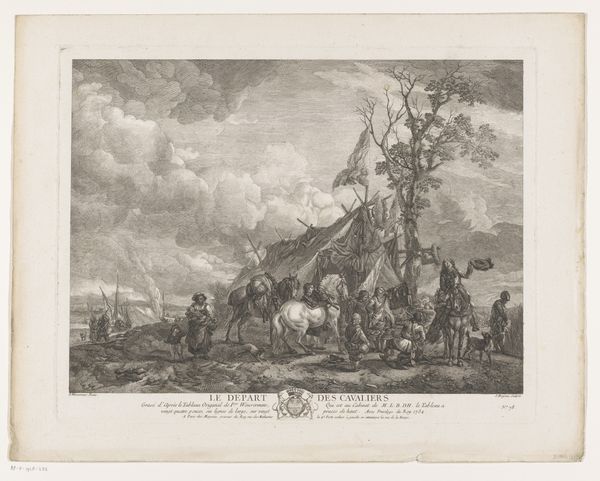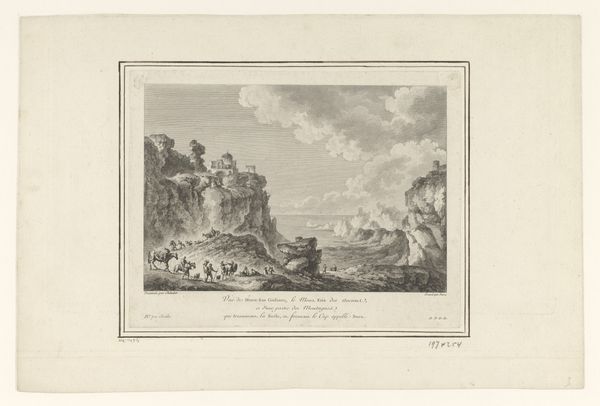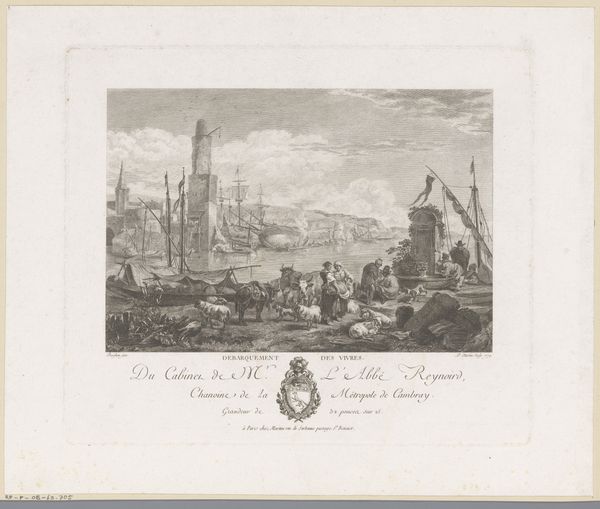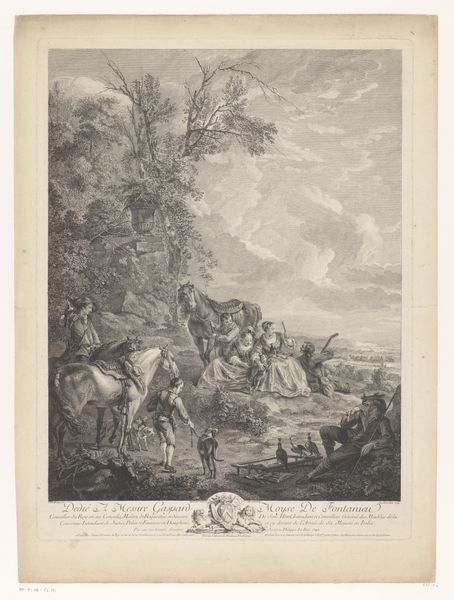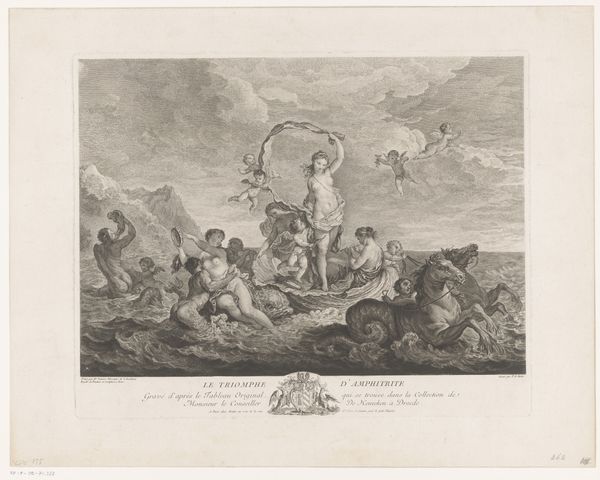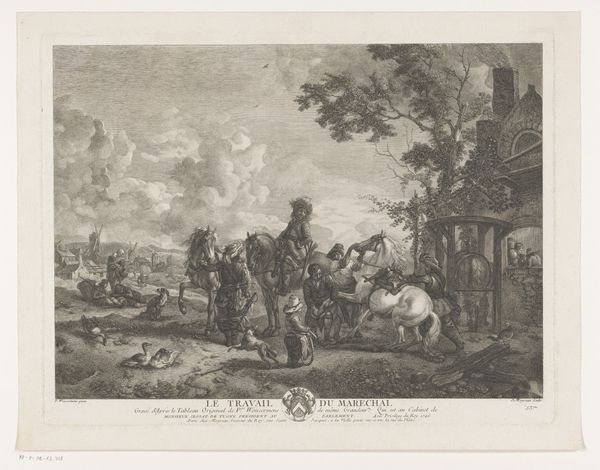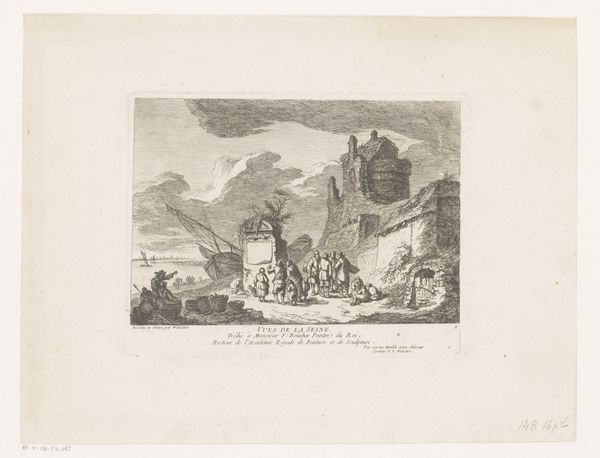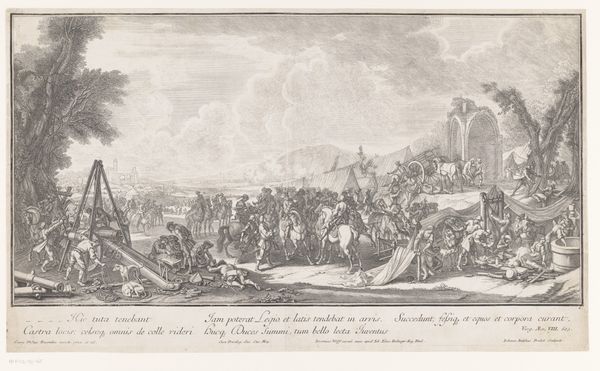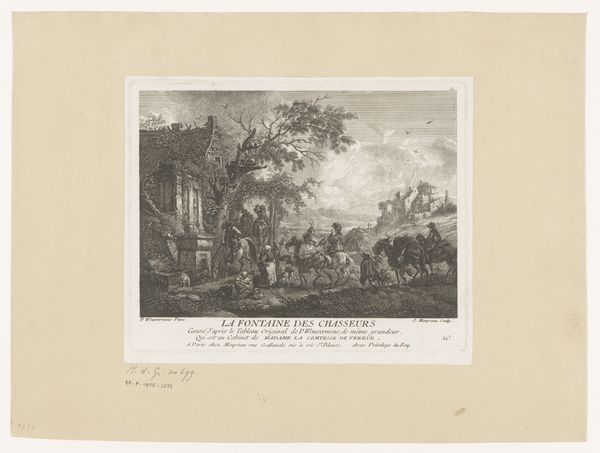
Dimensions: height 123 mm, width 84 mm
Copyright: Rijks Museum: Open Domain
This print of Jost von Silenen was made in the 18th century by G. Texier, using the technique of etching. Etching involves coating a metal plate with wax, scratching an image into the wax, then bathing the plate in acid, which bites into the exposed metal. The plate is then inked and printed, and this process can be repeated many times for a large edition. As you can see, this results in a graphic style, with strong lines and areas of tone created by cross-hatching. The print is a powerful example of how images could be mass-produced and disseminated in the 1700s, allowing for the circulation of portraits and other important subjects. It speaks to the rise of a visual culture driven by relatively efficient modes of production. The acid, the press, the paper: these materials are humble, yet when combined, they create an image with lasting historical value. This reminds us that all art – even a seemingly simple print – is deeply embedded in material processes.
Comments
No comments
Be the first to comment and join the conversation on the ultimate creative platform.

